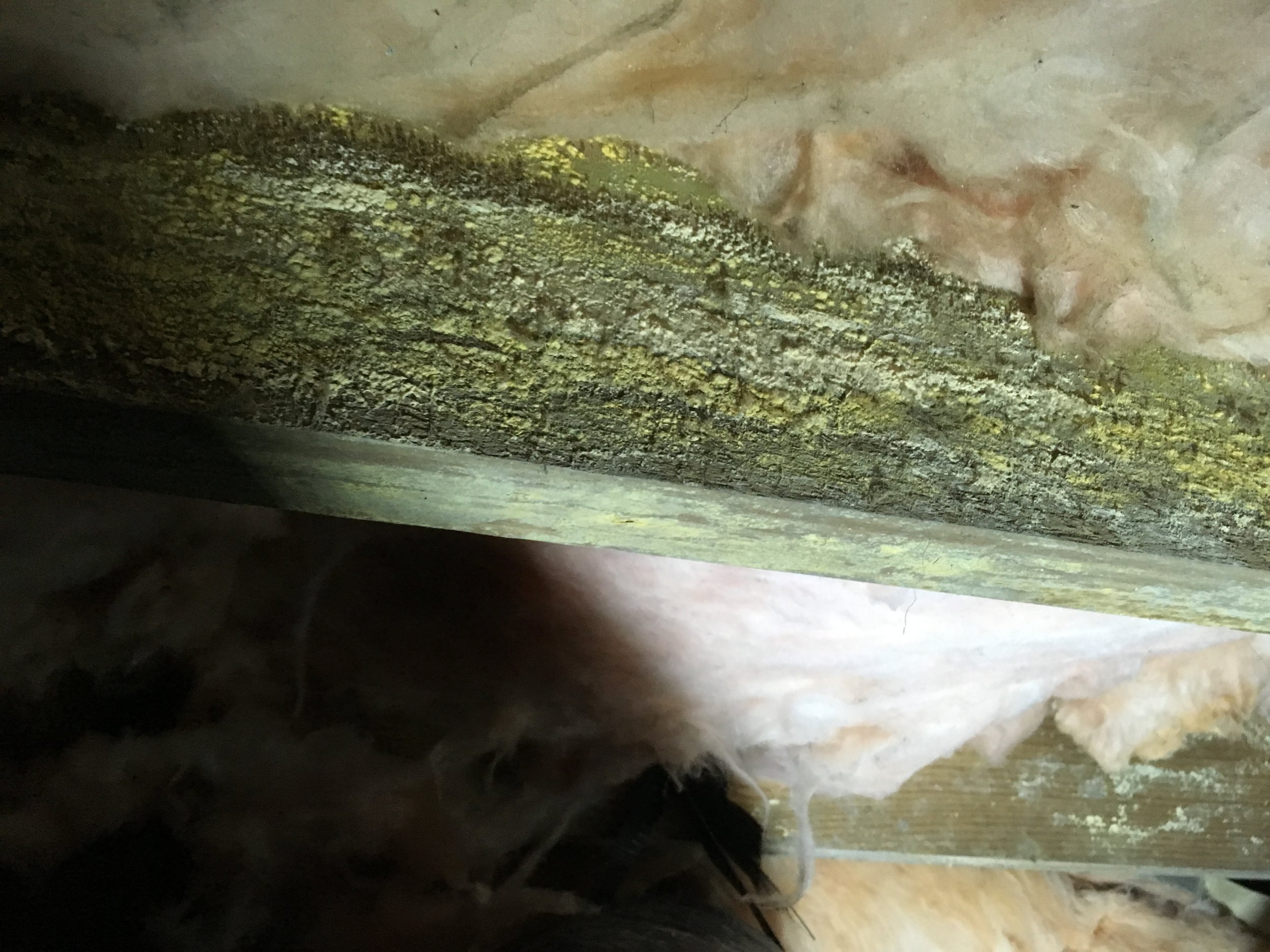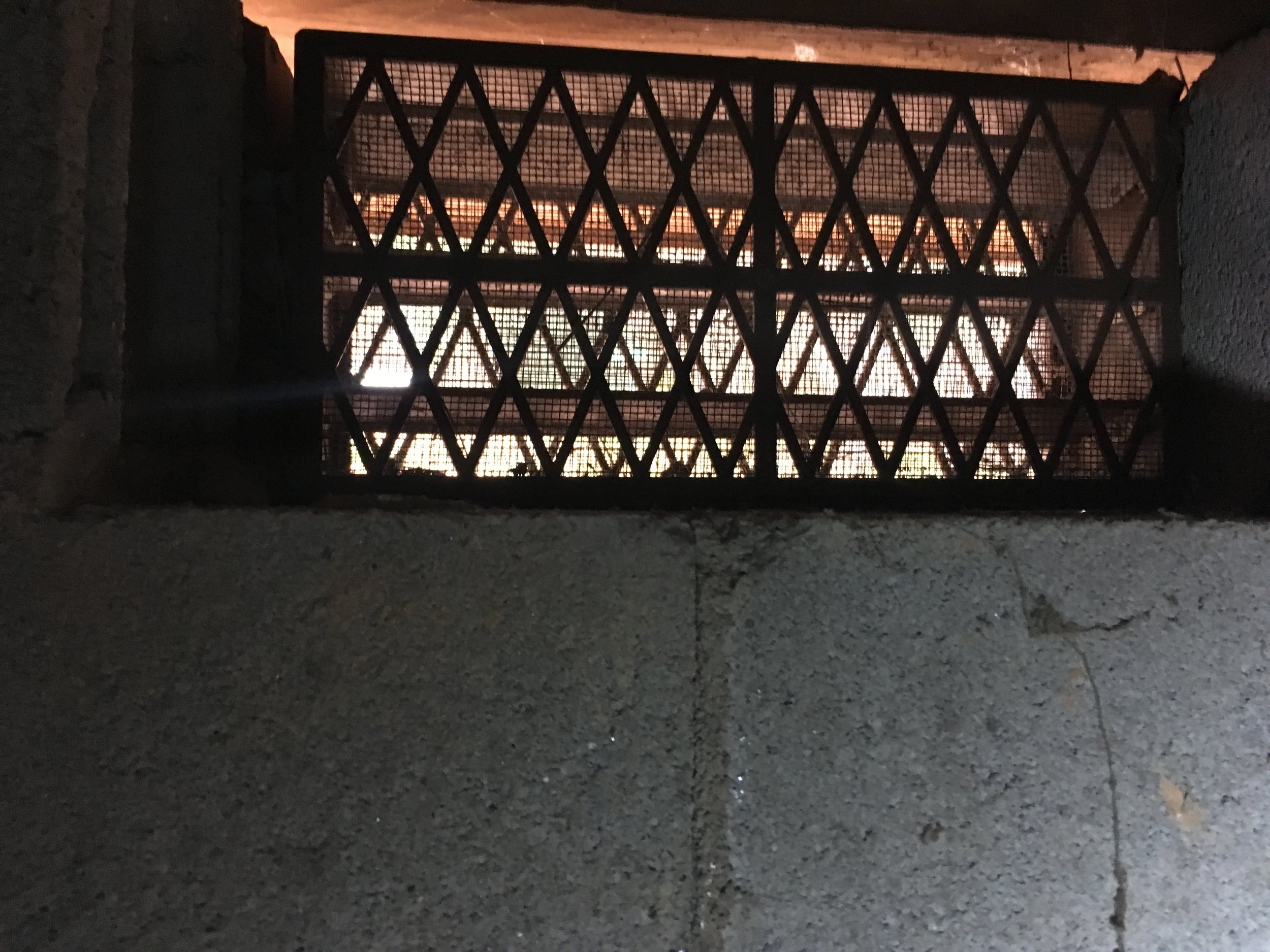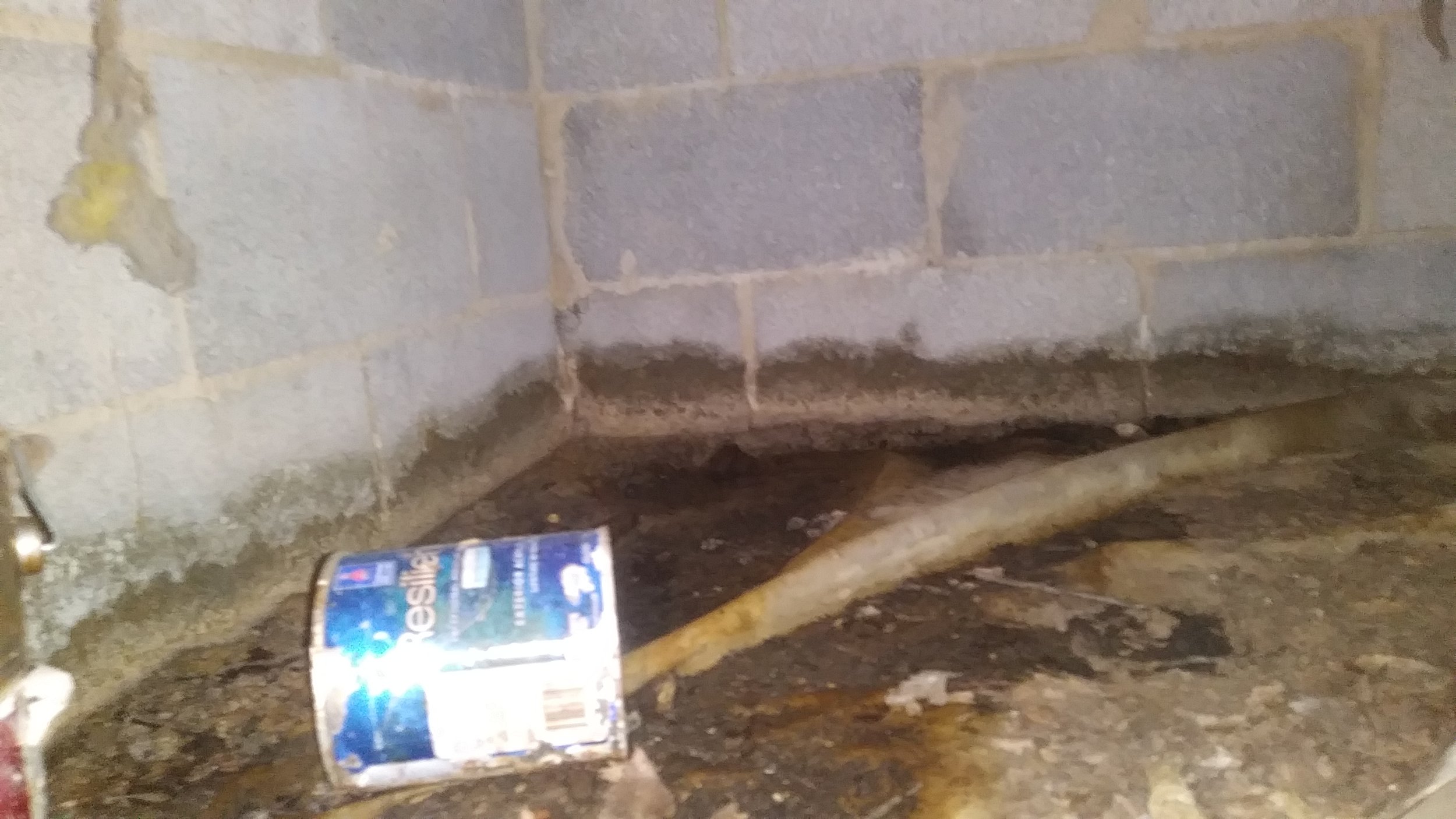Common Vented Crawl Space Problems
Here are some of the most common problems you may see in your crawl space. (Hint: Almost all start because of excess moisture!)
Moisture seeping up from the ground into the crawl space
If there is exposed dirt in your crawl space it is an avenue for ground moisture to seep into your crawl space. Normal rainfall, poor or improper landscaping and drainage around the foundation allows water to soak through the ground like a sponge and means moisture is reaching your crawl space. If your vapor barrier is missing or has poor coverage it will allow moisture from damp and muddy soil into your crawl space.
The first defense to stopping ground moisture is a correctly installed vapor barrier.
Condensation forming on walls, vapor barrier and HVAC equipment
Condensation can be a huge culprit in a vented crawl space. Warm humid outside air enters your crawl space through the vents in the foundation, as it enters your crawl space it meets the cooler air in your crawl space and meets the dewpoint. This can result in sweating walls or puddles and drips where this moisture settles. Condensation also forms on your HVAC ducts for the same reason, as these ducts carry cooler air for your AC under your home and this air leaks from the ducts or warmer air simply settles onto ducts it is creating drips, puddles and moisture in your crawl space. This process is reversed in cooler weather as chilly air enters and encounters warmer air under the home or heated HVAC lines.
Solving this problem may involve sealing vents and mechanically controlling moisture with a dehumidifier.
Flooding or standing water in crawl space
If you crawl space is flooding or has standing water in it, it may be due to excessive rainfall, improper drainage or landscaping around your foundation or even a high water table. Sometimes this water recedes on its own, especially after very heavy rainfalls as water table levels return to normal. If there are white or chalky marks (called efflorescence) on foundation walls it is a great indication that their is often standing water in your crawl space.
Installing a sump pump at the lowest point and making improvements to drainage allows this water to be pumped out automatically when flooding occurs.
Insulation falling or hanging from floor joists
If your crawl space has hanging or fallen insulation it can create a number of problems. First the insulation is not longer doing it’s job of insulating your sub floor and keeping AC or heat in your home where it belongs. If there is moisture in the crawl space, fallen insulation acts as a wick and can draw this moisture up to cause damage to joists and sub-flooring. Additionally, many homes have insufficient insulation for newer building codes and may not be as energy efficient as they should be. Current building codes recommend R-19 insulation for floors while many homes only have R-11 or some have none at all.
Triangle Crawl Space Solutions can help with either a quick-tidy or we can repair/replace insulation in your crawl space.
Mold on floor joists and sub-floors
Molds and mildews are naturally occurring almost everywhere we go, however mold in your crawl space can create a host of problems. Most importantly if mold is allowed to flourish, it can cause dry-rot to occur in floor joists and other structural elements of your home. Overtime these can result in costly repairs and damage to your house. Additionally some people are particularly sensitive to mold and may develop allergies and other health issues in response to elevated mold presence in the crawl space. The good news is that mold requires moisture to grow so reducing crawl space humidity and keeping wood moisture content low, effectively stops mold from continuing to grow and spread.
Our mold services can help remove or remediate existing mold.
Addressing these issues will help with secondary problems caused by moisture in your crawl space like:
Musty smells and odors coming into your home
If there are molds and moisture in your crawl space these smells may enter your home as well. These odors can travel through cracks and openings in your sub-floor and walls and can be pulled into your home and throughout your house due to the stack effect. Controlling moisture will help with these smells as well as improving indoor air quality overall.
Warping or Cupping Hardwood Floors
If your crawl space has high humidity and moisture it can travel through your sub-floor and cause damage to interior floors. Most often we see excessive cupping or buckling of hardwood floors as a result of crawl space moisture problems.
Mice, insects and other pests in crawl space
Bugs and other pests seek out your crawl space as a great place to call home. If there are access areas through holes in the foundation, improperly fitted doors or missing/torn access vents they can easily find a way into your crawl space. Once there, they make a cozy home in any fallen insulation and have easy access to water from puddles, condensation and other sources. Eliminating access and habitat while controlling moisture significantly reduces the appeal for insects and pests.









